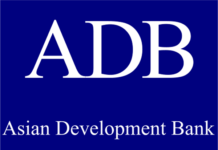Private-sector credit continuously contracted for more than six months during the current fiscal year, according to data released by the State Bank of Pakistan (SBP) on Tuesday.
The private sector repaid Rs15.313 billion to banks from July 1, 2023, to Jan. 19, 2024, compared to borrowing Rs393.2 billion during the same period the previous year.
The decline in private-sector borrowing is attributed to the impact of aggressive interest rate hikes by the central bank.
The benchmark rate was raised by 15 percentage points to a record 22 percent since September 2021 to curb inflation. Despite remaining unchanged at 22 percent since June 2023, the high borrowing costs have influenced the repayment trend.
The Karachi interbank offered rate, the primary lending rate, reached over 24 percent in September 2023, making borrowing more expensive for businesses. This weak economic activity led to private businesses struggling to secure financing. Banks, concerned about defaults, became cautious about lending to riskier borrowers.
High public-sector borrowing further limited the availability of bank funding for the private sector. Pakistani banks, holding substantial liquidity, opted for risk-free government securities, contributing to a drop in lending to private businesses.
Government borrowing from banks increased significantly, reaching Rs4 trillion during July-January FY24 to fund the budget deficit, compared to Rs1.4 trillion in the previous year.
The IMF’s country report highlighted that banks’ sovereign exposure increased from 48 percent of assets at the end of FY21 to 55.3 percent by the end of September 2023.
Economic growth saw a sharp decline from 6 percent in FY22 to 0.3 percent in FY23, reflecting the private sector’s dwindling economic confidence.
The SBP, in its monetary policy statement, mentioned a slight decline in large-scale manufacturing in the first five months of FY24, with a moderate increase noted in November.
Despite broad money (M2) growth hovering around 14 percent in FY24, reaching 17.8 percent year-on-year by the end of December 2023, the SBP anticipates this acceleration to be transitory, expecting a reversal in the coming months.
The Monetary Policy Committee noted a decline in M2 on a week-on-week basis to Rs31.9 trillion as of January 19, driven by a drop in bank deposits and a decline in currency in circulation.
Analysts suggest that the expected economic recovery and impending monetary easing, set to begin in March, could spur the expansion of private-sector credit.
The government projects a rebound in Pakistan’s economy in fiscal year 2024, with growth expected to be between 2-2.5 percent, driven by improved agricultural performance.
SBP’s GDP growth projections remain in the range of 2-3 percent, with positive signs of increased capacity utilization in the manufacturing sector, as per survey results.

























Upon discovering a reputable company on the Solar Power System website, I opted for solar panel installation. The process was smooth, and I’m delighted with the results. It feels great to generate renewable energy and contribute to a sustainable future.